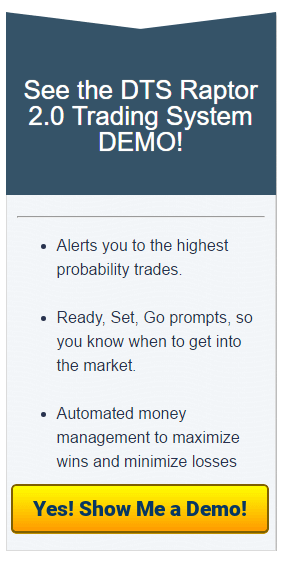Day Trading Tips and Tricks
Choosing the Right Stop Loss Strategy
 I talk with traders all the time about their Stop loss strategy. The number one concern I hear is getting stopped out and then having the trade turn back in the direction of its original move. This can be incredibly frustrating.
I talk with traders all the time about their Stop loss strategy. The number one concern I hear is getting stopped out and then having the trade turn back in the direction of its original move. This can be incredibly frustrating.
In fact, some traders I talk with don’t believe in using a stop loss strategy. Let me say right up front – this approach usually ends in disaster! These individuals get caught in the psychological trap of thinking “this trade does not make sense, or the market just can’t go higher…”
It is my opinion that trading is 90% risk management and 10% entry timing.
Why you ask? It’s because, at any moment in a trade, many people are involved – some going long and some taking shorts. Their long and short decisions are neither right nor wrong. In fact, both could be right depending on the time frame being used. In the long run, the difference between the losers and the winners will be how they manage their STOPS. Bottom line – you simply CANNOT trade without a good stop loss strategy.
Assuming you agree that stops are a necessity, your next question will be “what is the best way to use them?”
Let’s define the best kind of stop-loss strategy you should use:
- Technical Stops
- Tick Stops
- Bar Stops
Technical Stops are based on Support and Resistance. So, you see a trade hitting a certain price level sometimes. What do you do? Typically, most traders decide to go short. But, before YOU jump to that decision, ask yourself this: Is the overall market trend positive for the day? If the answer is yes, then DON’T SHORT. Why – because markets have a tendency to rest and then continue to trend. You would be much better served to wait for a breakout and then put your stop (sell-stop) at the bottom of that channel. Remember… analyze your trade within the context of how the move was formed and the overall sentiment of the day. An excellent approach to help you “see” potential breakout areas and key support and resistance points is to use a tool that visualizes the data. Have a look at the Trade Manager.
 It can assist with a stop loss strategy that uses Support and Resistance points.
It can assist with a stop loss strategy that uses Support and Resistance points.
Tick Stops are based on the number of ticks you are willing to put at risk for the trade. Let’s say you trade the ES (Emini S&P 500) and you don’t want to risk more than ten ticks to gain five ticks. For such a scenario to work, you will have to be right more than 50% of the time. This outcome is doable, but can be very psychologically taxing. To succeed with this type of approach, you will need to use multiple contracts, let some of your contracts ride, and protect your Trades all along the way. The idea is to base your stops on trailing ticks, and then let the market do its thing. This approach is very hard to do manually. You will be much better off using a good trading tool such as the Trade Manager system add-on tool.
This type of software can potentially tilt the odds in your favor.
The last type of stop-loss strategy you can use is a Bar Stop. Let’s say you trade a 3-minute bar, and the first hour of each bar is 4 points. The result would be 16 Ticks. That might be just the right stop you need for your trade. However, the length of your entry bar may be more than you can afford. Look at the ranges, if they are too big, just wait for another move with smaller bar ranges. Patience is a skill that will serve you well in your tradecraft. Note: these calculations need to be done fairly quickly. A great tool to help with this is the Trade Manager (NinjaTrader Chart Trader alternative).
One final note: Using a stop loss strategy will not enable you to avoid ALL losses. But, they can help you protect a trade that’s turned against you. The trick is to have an intelligent method that defines where to place your stop and not just randomly exit when fear or frustration kicks in. In fact, if you become technically savvy enough, you will know within a short period whether you are right or wrong. Eventually, you will find that big stops are not required.




